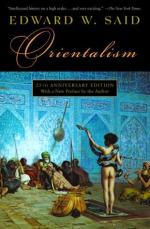|
This section contains 15,622 words (approx. 53 pages at 300 words per page) |

|
SOURCE: “Robert Southey and the Oriental Renaissance,” in Ungoverned Imaginings: James Mill's The History of British India and Orientalism, Clarendon Press, 1992, pp. 47-86.
In the following excerpt, Majeed explores Robert Southey's two Oriental romances, Thalaba the Destroyer and The Curse of Kehama, in terms of his attempt to discern historical patterns.
A New Set of Images and Similitudes
Raymond Schwab has argued that the oriental renaissance was inaugurated in 1771 by Anquétil-Duperron's Zend-Avesta, ouvrage de Zorastre. This was the first approach to an Asian text totally independent of biblical and classical traditions.1 Robert Southey's two epics Thalaba the Destroyer (1801) and The Curse of Kehama (1810) reflect this revival of interest in the history, literature, and antiquities of non-European cultures. Southey was certainly aware of the importance of Duperron's work. In 1800 he commented that it was ‘rather disgraceful that the most important acquisition of Oriental learning should have been given...
|
This section contains 15,622 words (approx. 53 pages at 300 words per page) |

|


